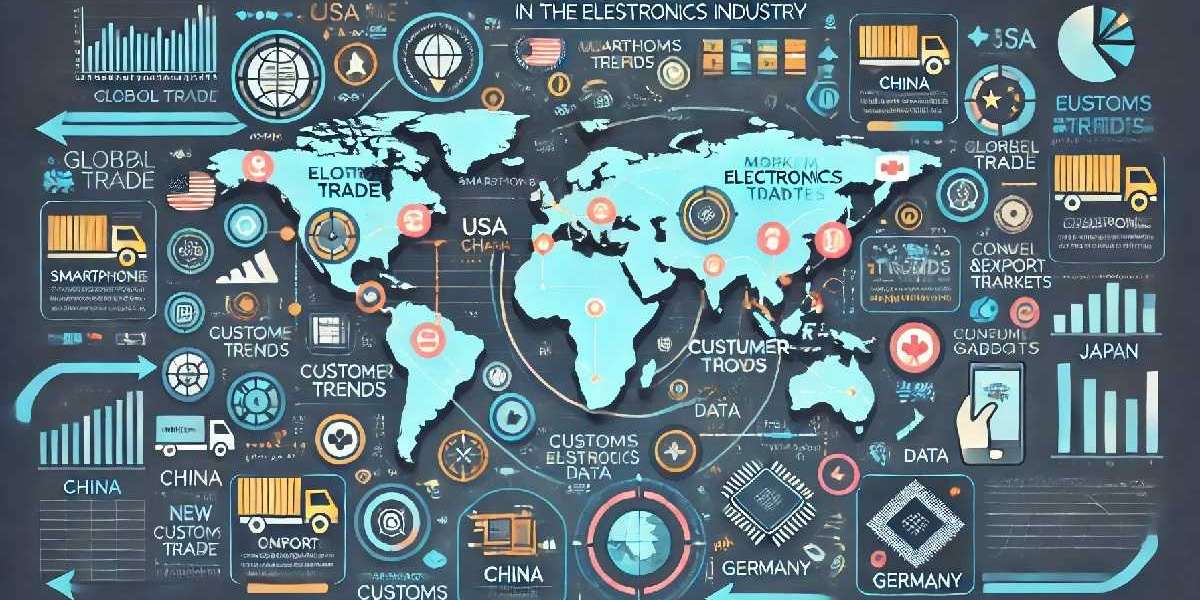In today's global economy, the electronics industry stands as one of the most dynamic sectors, constantly evolving with new technologies and innovations. From smartphones and consumer electronics to industrial machinery and advanced components, this industry plays a pivotal role in shaping global trade patterns. For businesses looking to enter new markets or optimize their supply chains, customs data provides invaluable insights that can guide decision-making, identify emerging opportunities, and streamline operations. By leveraging customs data, companies in the electronics sector can stay ahead of the curve and tap into new trade opportunities.
What is Customs Data?
Customs data refers to detailed information collected by customs authorities during the import and export of goods. This data includes critical details such as product descriptions, HS (Harmonized System) codes, quantities, values, country of origin, and destination, as well as information about the parties involved in the transactions (importers, exporters, and suppliers). Customs data is publicly available in many countries and serves as a key resource for businesses, researchers, and government agencies to monitor international trade activities.
The Importance of Customs Data in Electronics Trade
In the electronics industry, trade flows are influenced by numerous factors such as technological advancements, changing consumer preferences, regulatory changes, and geopolitical events. Customs data acts as a comprehensive record of cross-border trade, offering businesses real-time insights into various aspects of the market. For electronics companies, this data can highlight trends, identify gaps, and uncover new markets for expansion.
1. Identifying Emerging Markets
One of the most powerful ways customs data can help electronics companies is by identifying emerging markets. By analyzing import and export data, businesses can observe which countries are increasingly importing electronics or specific components. This information allows companies to spot growing markets early, enabling them to adjust their strategies and capitalize on these opportunities.
For example, if customs data reveals that a country has significantly increased imports of consumer electronics like smartphones, smartwatches, or home appliances, electronics companies can use this information to assess whether entering this market would be profitable. In many cases, this type of market intelligence is not readily available through other sources, making customs data an essential tool for market entry strategies.
2. Assessing Competitive Landscape
Customs data provides a clear view of the competitive landscape by revealing who the major players are in a particular market. By examining import/export volumes, businesses can determine which companies are leading the trade in specific electronics products. This can help companies assess their potential competitors in new markets.
For instance, if a company is considering entering a new country with a particular type of electronic product, customs data can reveal the names of key importers or suppliers in that region. Knowing the competitors helps businesses assess the market’s saturation, pricing strategies, and potential barriers to entry. With this intelligence, companies can make data-driven decisions to gain a competitive edge.
3. Identifying Key Suppliers and Buyers
Customs data is an invaluable resource for identifying key suppliers and buyers in the electronics industry. It allows companies to track the flow of goods between different countries and identify the parties involved in these transactions. Electronics companies can use this information to find reliable suppliers, negotiate better deals, and establish partnerships with businesses already active in the target markets.
For instance, if a company in the United States is interested in sourcing microchips from Taiwan, customs data will show the key exporters in Taiwan and their transaction volumes. Similarly, customs data can reveal which companies are importing particular electronic products into the US. This information can help electronics companies identify lucrative buyer-supplier relationships and streamline their supply chains.
4. Analyzing Trade Volumes and Trends
Customs data provides detailed statistics on trade volumes, enabling electronics businesses to track the demand and supply of specific products across various markets. Analyzing trends in trade volumes can highlight shifts in consumer demand, technological advancements, or even seasonal fluctuations that impact the electronics industry.
For example, by reviewing customs data over a period of time, businesses can track how demand for certain electronics has increased or decreased in different countries. If a particular product, such as electric vehicles or renewable energy components, is seeing a significant rise in imports, companies can use this information to adjust their product lines or marketing strategies to meet changing demand.
5. Monitoring Regulatory Changes
The electronics industry is often subject to complex regulations, especially regarding product standards, safety certifications, and import/export tariffs. Customs data can offer insights into how these regulations are affecting trade flows. By monitoring customs records, businesses can keep track of any changes in trade policies, including the imposition of new tariffs, quotas, or restrictions that might impact their business operations.
For instance, if a country enforces higher tariffs on imported smartphones, customs data can highlight how this is influencing trade volumes. Electronics companies can use this information to adapt their strategies, whether by exploring alternative markets, adjusting product pricing, or even moving production to countries with more favorable trade conditions.
6. Optimizing Supply Chains
Supply chain efficiency is crucial for success in the electronics industry, where rapid innovation and short product lifecycles demand a flexible and responsive approach to logistics. Customs data allows businesses to monitor the flow of goods across borders, helping them optimize their supply chains by identifying the fastest and most cost-effective shipping routes, suppliers, and customs processes.
For example, by analyzing import data for a specific product, a company might discover that a particular port or trade route consistently experiences delays or higher costs. Armed with this information, they can consider alternative routes or suppliers to ensure timely delivery and maintain competitive pricing.
7. Mitigating Risks
In international trade, risks such as fraud, counterfeiting, and geopolitical instability can severely impact a company’s operations. Customs data helps mitigate these risks by offering visibility into the legitimacy of shipments and transactions. By tracking the movement of goods, electronics companies can ensure that they are dealing with reputable suppliers and buyers.
Additionally, customs data can help identify regions where trade activities may be subject to higher scrutiny or regulatory challenges. This allows businesses to plan their entry into new markets more cautiously, reducing exposure to unnecessary risks.
Conclusion
Customs data is a powerful tool for identifying new trade opportunities in the electronics industry. By providing insights into emerging markets, assessing the competitive landscape, identifying key suppliers and buyers, and helping businesses optimize their supply chains, customs data enables electronics companies to make informed, data-driven decisions. As global trade continues to evolve, the role of customs data in uncovering new growth opportunities will only become more crucial. Companies that effectively leverage this data will be better equipped to navigate the complexities of international trade, seize new opportunities, and stay ahead of the competition in the rapidly changing electronics market.







